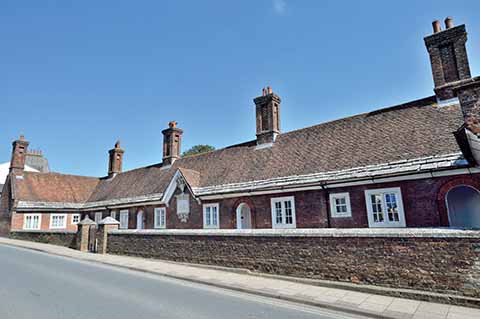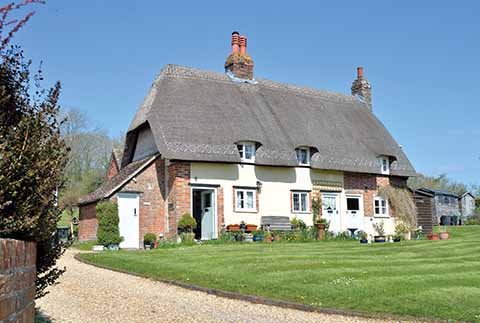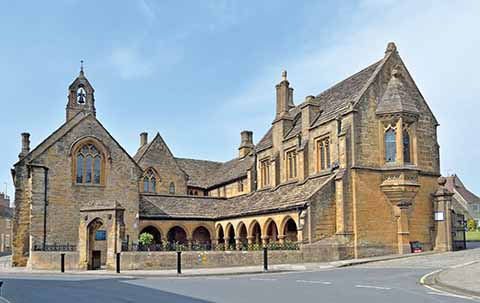Dorset almshouses
Peter Booton goes on a whistle-stop tour of the county’s almshouses
Published in August ’19
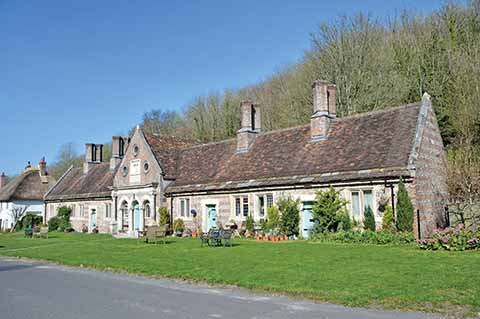
Tregonwell Almshouses, Milton Abbas bearing the date 1779 when they were moved from the old village and rebuilt on their present site
Almshouses are a bit like what the judge said about pornography: they’re hard to describe, but you know one when you see it. The word ‘alms’ is originally derived from the Greek ‘eleémosuné’, meaning ‘compassion’. Until the 15th century, when the term ‘almshouse’ was first used, institutions that cared for the sick and disabled as well as the poor and elderly were commonly called ‘hospitals’. Charitable foundations of this nature providing ‘hospitality’ were generally built and endowed by religious orders and wealthy benefactors. The earliest recorded charitable foundations in Dorset, Brother John’s ‘House of Mercy’ in Sherborne and the Shaftesbury Hospital of St John the Baptist, date from 1223, when they were endowed by King Henry III with timbers from the Royal Forests for building and repair works.
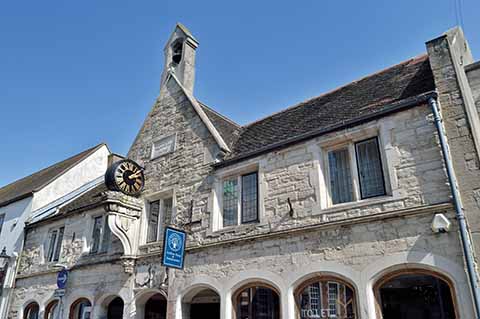
Surviving frontage of former Napper’s Mite almshouses in South Street, Dorchester. The clock came from the old workhouse when it was demolished in 1837.
Within twenty years other foundations followed: the Hospital of St Mary Magdalene at Allington in 1232, the Hospital of St John the Baptist at nearby Bridport in 1240 and the Hospital of St Margaret and St Anthony on the outskirts of Wimborne in 1241. The latter functioned as a leper hospital until the disease was finally eradicated in England and St Margaret’s then became an almshouse, a purpose it continues to serve today. Its 13th-century chapel is still a place of regular worship, too. For nearly 300 years, until 1981, St Margaret’s enjoyed a beneficial association with the Kingston Lacy Estate and during this period three new pairs of cottages were built. Since 1981 the almshouses have been extensively repaired and modernised and a further pair of cottages built, bringing the present number of properties to sixteen. Each benefits from its own small garden, all of which are beautifully maintained.
Two Dorset almshouses dating from the 15th century are the Almshouse of St John the Baptist and St John the Evangelist in Sherborne, which was founded in 1437 to replace an earlier building of 1406, and Streche’s Almshouse in East Street, Wareham, which bears a plaque dating its foundation to 1418. The present building was rebuilt in 1741 and, having survived the fire of 1762, ceased to be an almshouse in 1907, when its inmates were transferred to a new almshouse in Worgret Road which is still in use today. St Johns’ House in Sherborne, as the Almshouse of St John the Baptist and St John the Evangelist is now known, is a residential home boasting a medieval chapel (open to the public at certain times) and an original letter dated 1594 from Sir Walter Raleigh to the Almshouse Master.
Henry VIII’s Dissolution of the Monasteries in 1537 and subsequent ruination of many religious establishments left the poor largely without any assistance until a system of Poor Relief, funded by parishes, was introduced in 1601 during the reign of Elizabeth I. More almshouses were built in England during the 17th century than at any other time, with twenty being founded or endowed in Dorset alone. A number from this period still serve their original purpose, including Sir Anthony Ashley’s Almshouses at Wimborne St Giles, which were founded in 1624 and endowed with a large farm at Gussage All Saints. In the case of the Tregonwell Almshouses in Milton Abbas, these were originally built by John Tregonwell in the latter part of the 17th century, but then rebuilt a century later in their present position when Joseph Damer purchased the Tregonwell estate and relocated
the village.
Many of the larger Dorset towns were fortunate to have a number of charitable foundations to care for the needs of their poor and elderly citizens. Dorchester gained four, if you include its workhouse, during the 17th century. One of these was Napper’s Mite in South Street, built in 1616 and endowed by Sir Robert Napper of Middlemarsh. His grandson, Gerald, helped draft rules for its inmates who had to be ‘60 or older, or decayed, and unmarried’. The building was sold in the 1950s and restored by its new owner, who converted the ground floor into shops.
Blandford Forum could boast three almshouses and an early medieval leper hospital. The town’s first almshouse probably dates from the latter part of the 16th century, when it was built near the parish church. However, it was destroyed in the Great Fire of 1731, but after being rebuilt some years later, it remained in use until 1926, when its replacements were erected in Park Road. The old ‘church almshouses’ then served as a public bath house until being demolished after World War 2. All that survives today is a three-arched stone portico fronting Church Walk.
The grade II listed Ryves Almshouses in Salisbury Street, Blandford, date from 1682, when they were founded by Baron Ryves of Damory to cater for poor persons who were to wear a badge depicting a greyhound (as on the Ryves coat of arms) on their outer clothing. Fortunately, Ryves Almshouses escaped the fire of 1731 and still serve their original purpose, but with fewer residents who now benefit from more spacious, modernised accommodation. Barnes Homes Almshouses in Salisbury Road, Blandford, have been assisting ‘poor persons of good character who have resided in the Borough of Blandford Forum or within half a mile thereof for not less than two years’, since 1909 when they were built by John Iles Barnes in memory of his brother, Philip Abraham Barnes, a former seven-time mayor of Blandford. The almshouses were extended in the latter half of the 20th century and can now accommodate more than 27 people.

Former Streche’s almshouses in East Street, Wareham, erected 1418 and rebuilt 1741. The bell tower was once part of the 1768 Town Hall and then relocated when the present Town Hall was built in 1870.
Modern-day charitable foundations are managed and run by trustees who are volunteers. Residents are required to pay a weekly or monthly maintenance contribution which is similar to rent but different in legal terms. Generally there are restrictions with regard to eligibility, often defined by the length of residency within a specified area, and applicants may be individually assessed as to their suitability for acceptance. Not all, though, apply age restrictions and some will accommodate families. There are certain establishments, too, that only accept members of specific trades and occupations, such as retired clergymen, miners and fishermen.
